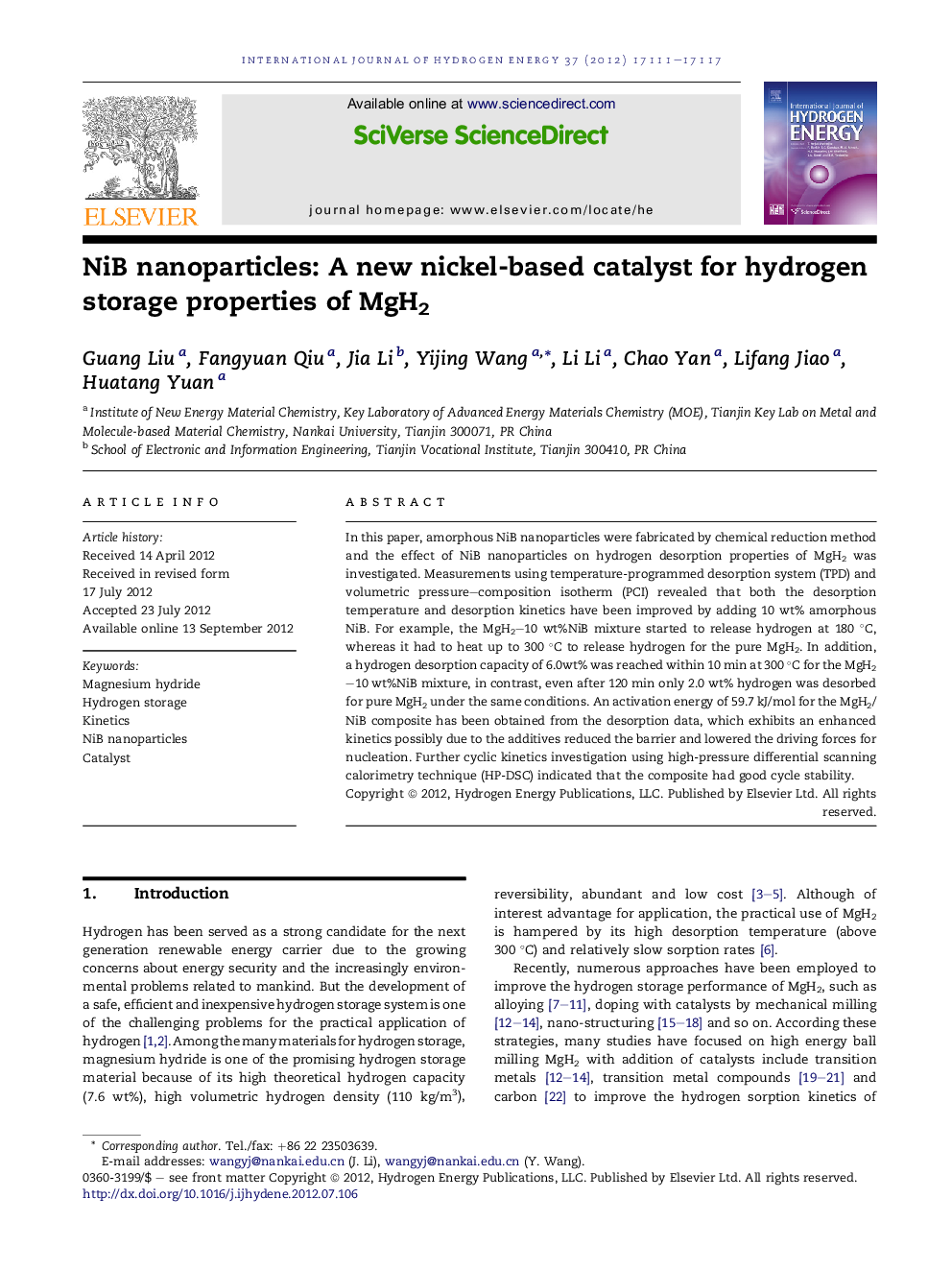| Article ID | Journal | Published Year | Pages | File Type |
|---|---|---|---|---|
| 1270893 | International Journal of Hydrogen Energy | 2012 | 7 Pages |
In this paper, amorphous NiB nanoparticles were fabricated by chemical reduction method and the effect of NiB nanoparticles on hydrogen desorption properties of MgH2 was investigated. Measurements using temperature-programmed desorption system (TPD) and volumetric pressure–composition isotherm (PCI) revealed that both the desorption temperature and desorption kinetics have been improved by adding 10 wt% amorphous NiB. For example, the MgH2–10 wt%NiB mixture started to release hydrogen at 180 °C, whereas it had to heat up to 300 °C to release hydrogen for the pure MgH2. In addition, a hydrogen desorption capacity of 6.0wt% was reached within 10 min at 300 °C for the MgH2–10 wt%NiB mixture, in contrast, even after 120 min only 2.0 wt% hydrogen was desorbed for pure MgH2 under the same conditions. An activation energy of 59.7 kJ/mol for the MgH2/NiB composite has been obtained from the desorption data, which exhibits an enhanced kinetics possibly due to the additives reduced the barrier and lowered the driving forces for nucleation. Further cyclic kinetics investigation using high-pressure differential scanning calorimetry technique (HP-DSC) indicated that the composite had good cycle stability.
► Catalytic effect of NiB nanoparticles ball milled with MgH2 is investigated. ► H2 desorption starts at 180 °C and 6.0 wt% H2 can be released at 300 °C within 10 min. ► H2 desorption kinetics of the mixtures is analyzed using the Arrhenius and JMA equations. ► HP-DSC cycling tests show the composites have good cyclic stability.
